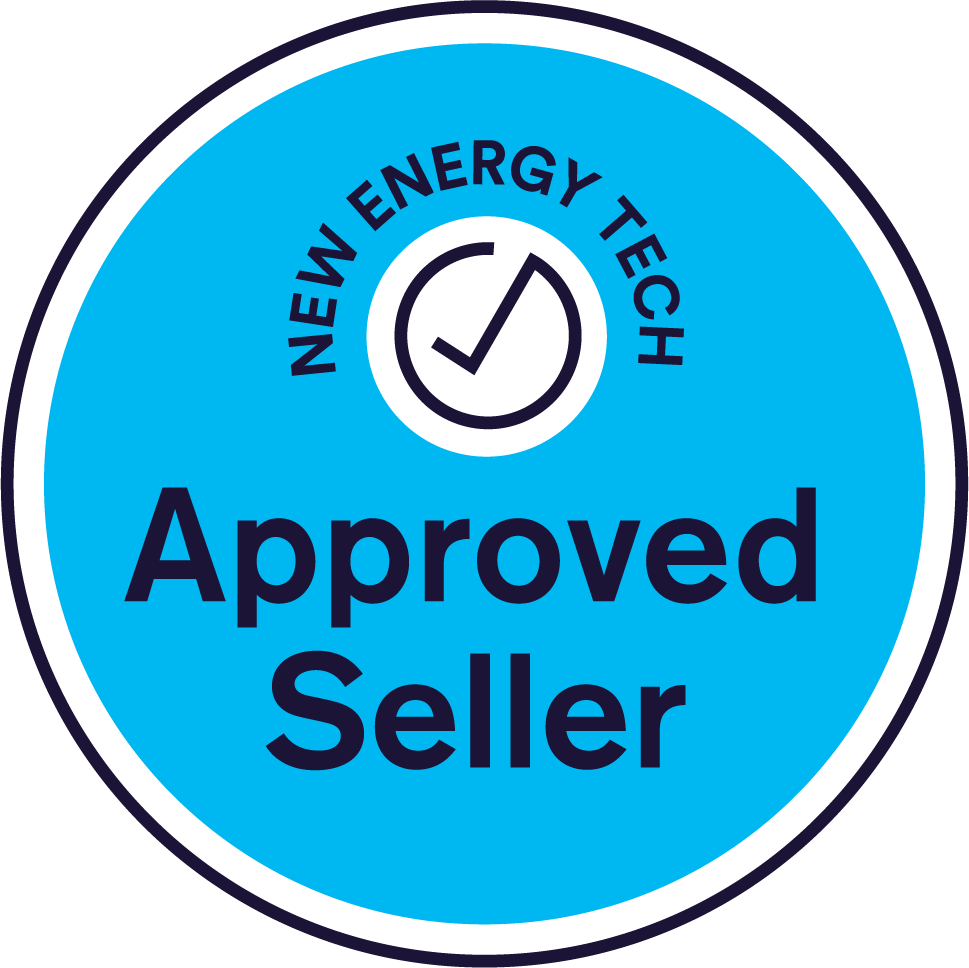BYD vs Tesla, two major players dominate this space: Tesla, with its widely recognized Powerwall, and BYD, a rapidly growing Chinese company known for its Battery-Box line. Let's delve into the specifics of these two solar battery solutions, comparing their chemistry, design, performance metrics, warranty terms, and overall value proposition.
Chemistry Clash: LFP vs. NMC - A Tale of Two Chemistries
BYD Battery-Box:
Primarily utilizes Lithium Iron Phosphate (LFP) battery technology. LFP boasts a simpler chemical structure (LiFePO4) compared to Tesla's Nickel Manganese Cobalt (NMC) chemistry. Key advantages of LFP in a solar storage application include:
Safety: LFP's inherent stability translates to exceptional thermal runaway resistance. Thermal runaway is a dangerous scenario where batteries overheat and self-ignite. LFP's superior safety profile makes it a popular choice for home energy storage.
Lifespan: LFP batteries generally offer longer lifespans, experiencing slower degradation in capacity over time. This translates to a longer usable life for your solar battery storage system.
Cost: LFP batteries are typically less expensive to produce due to the absence of expensive materials like cobalt.
Tesla Powerwall:
Utilizes Nickel Manganese Cobalt (NMC) chemistry, with variations in the specific ratios of these elements (e.g., NMC 660, NMC 532). While NMC offers contrasting characteristics:
Energy Density: NMC batteries boast a higher energy density compared to LFP. In theory, this could translate to a larger capacity battery in a similar footprint, potentially allowing for a single Powerwall unit to store more usable energy.
Efficiency: NMC batteries might exhibit slightly higher round-trip efficiency, meaning less energy loss during the charging and discharging cycles. However, the real-world difference between LFP and NMC efficiency in home storage applications may be minimal.
Key Takeaway: BYD prioritizes safety and longevity with LFP, while Tesla prioritizes maximizing energy density with NMC.
Exploring BYD Solar Battery vs. Tesla Powerwall Battery: A Detailed Technical Comparison
Overview of BYD Solar Battery Technology:
BYD (Build Your Dreams) is a global leader in renewable energy solutions, offering a range of solar battery products designed to maximize energy independence and efficiency. BYD solar batteries feature advanced lithium iron phosphate (LiFePO4) chemistry, known for its safety, longevity, and reliability. Key technical details of BYD solar batteries include:
Chemistry: BYD solar batteries utilize lithium iron phosphate (LiFePO4) chemistry, which offers superior thermal stability, safety, and long cycle life compared to other lithium-ion chemistries.
Energy Density: While LiFePO4 batteries generally have lower energy density compared to other lithium-ion chemistries, BYD optimizes the design of its batteries to maximize energy density while maintaining safety and reliability.
Capacity Options: BYD offers a range of capacity options for its solar batteries, allowing homeowners to choose the size that best fits their energy storage needs. Capacities typically range from a few kilowatt-hours (kWh) to several tens of kWh.
Scalability: BYD solar batteries are designed to be scalable, allowing homeowners to expand their energy storage capacity over time as their energy needs grow. This modular approach enables flexible and cost-effective system configurations.
Overview of Tesla Powerwall Battery Technology:
Tesla, renowned for its electric vehicles and renewable energy products, offers the Powerwall battery for residential energy storage applications. Tesla Powerwall batteries feature lithium-ion chemistry and incorporate advanced technology for optimal performance and integration. Key technical details of Tesla Powerwall batteries include:
Chemistry: Tesla Powerwall batteries utilize nickel-based lithium-ion chemistries, such as nickel-cobalt-aluminum (NCA) or nickel-manganese-cobalt (NMC), known for their high energy density and performance.
Energy Density: Tesla Powerwall batteries offer industry-leading energy density, allowing for compact and space-efficient energy storage solutions. High energy density enables longer storage durations and increased self-consumption of solar energy.
Capacity Options: Tesla offers a single capacity option for its Powerwall battery, typically around 13.5 kWh of usable capacity. While this may limit flexibility compared to BYD's modular approach, it simplifies the decision-making process for homeowners.
Integrated Inverter: Tesla Powerwall batteries come with an integrated inverter, enabling seamless integration with solar PV systems and grid connections. The integrated inverter simplifies installation and reduces system complexity.
Technical Comparison:
Now, let's compare BYD solar batteries and Tesla Powerwall batteries based on key technical aspects:
Chemistry: BYD utilizes lithium iron phosphate (LiFePO4) chemistry, known for its safety and longevity, while Tesla uses nickel-based lithium-ion chemistries, offering high energy density and performance.
Energy Density: Tesla Powerwall batteries typically offer higher energy density compared to BYD solar batteries, resulting in more compact and space-efficient energy storage solutions.
Capacity Options: BYD offers a range of capacity options, providing flexibility for homeowners to customize their energy storage systems. In contrast, Tesla offers a single capacity option with the Powerwall battery.
Scalability: BYD solar batteries are designed to be scalable, allowing homeowners to expand their energy storage capacity over time. Tesla Powerwall batteries do not offer modular scalability, limiting flexibility in system configuration.
Performance in Focus: Usable Capacity, Warranty, and Integration
Usable Capacity:
Both BYD Battery-Box and Tesla Powerwall come in various capacities, allowing homeowners to choose a system that fits their energy needs. However, it's crucial to compare usable capacity, as some manufacturers advertise the total capacity, which may not be fully accessible to the user.
Warranty:
BYD typically offers a longer warranty on their Battery-Box products compared to Tesla's Powerwall. This can be a significant factor for homeowners seeking long-term peace of mind regarding their investment.
System Integration:
Both
BYD and Tesla batteries can be integrated with various solar inverter
brands, but compatibility verification is essential before purchase.
Some installers may have more experience or expertise with specific
brands.
Key Takeaway:
Carefully compare usable capacity, warranty terms, and system compatibility for your specific needs.
BYD Solar Battery vs. Tesla Powerwall Battery:
A Comprehensive Comparison
As the world transitions toward renewable energy sources, solar power has emerged as a key player in reducing our carbon footprint. Solar panels efficiently convert sunlight into electricity, but what happens when the sun isn’t shining? This is where solar batteries come into play. In this detailed comparison, we’ll explore the BYD Solar Battery and the Tesla Powerwall Battery, two prominent contenders in the solar energy storage market.
1. Introduction to Solar Batteries
1.1 What Are Solar Batteries?
Solar batteries, also known as energy storage systems, enhance the efficiency of solar energy systems by storing excess electricity generated during sunny days. These batteries allow homeowners and businesses to utilize stored energy during cloudy weather or at night when direct solar conversion isn’t possible. Let’s dive deeper into the specifics of BYD and Tesla batteries.
2. BYD Solar Battery
2.1 BYD Corporation: A Brief Overview
BYD (Build Your Dreams) is a Chinese multinational company with a strong focus on electric vehicles, energy storage, and renewable energy solutions.
Founded in 1995, BYD has become a major player in the global battery industry, particularly in lithium-ion battery production.
BYD’s commitment to sustainability extends beyond EVs; it includes solar energy storage as well.
2.2 The BYD B-Box Solar Battery
The BYD B-Box is a modular solar battery system designed for residential and commercial applications.
Key Features:
Scalability: The B-Box allows users to start with a smaller capacity and expand as needed by adding more battery modules.
Lithium Iron Phosphate (LiFePO4) Chemistry: BYD uses LiFePO4 cells, known for their safety, long cycle life, and thermal stability.
High Energy Density: The B-Box offers impressive energy storage capacity.
Integrated Battery Management System (BMS): Ensures optimal performance and safety.
Compatibility: Works seamlessly with solar inverters and grid-tied systems.
2.3 Pros of the BYD B-Box
Cost-Effective: The B-Box provides excellent value for its capacity.
Safety: LiFePO4 chemistry minimizes fire risk and ensures stable operation.
Expandability: Users can add more modules over time.
Longevity: BYD’s reputation for durable batteries adds confidence.
2.4 Cons of the BYD B-Box
Availability: BYD products may be less accessible in certain regions.
Warranty: Warranty terms may vary based on location.
3. Tesla Powerwall Battery
3.1 Tesla: The EV Pioneer
Tesla, led by visionary entrepreneur Elon Musk, needs no introduction. Its electric vehicles and energy products have disrupted industries worldwide.
The Tesla Powerwall is an integral part of Tesla’s mission to accelerate the world’s transition to sustainable energy.
3.2 The Tesla Powerwall 2
Key Features:
Capacity: The Powerwall 2 offers 13.5 kWh of usable energy storage.
AC-Coupled System: The Powerwall is AC-coupled, meaning it connects to the home’s electrical system.
Liquid Cooling: Advanced thermal management ensures optimal performance.
Seamless Integration: Works seamlessly with Tesla solar panels and other inverters.
Backup Power: Provides backup during grid outages.
3.3 Pros of the Tesla Powerwall 2
Integration: Designed to work seamlessly with Tesla solar systems.
Brand Reputation: Tesla’s brand reliability inspires confidence.
Backup Power: Critical during power outages.
Advanced Technology: Liquid cooling and smart features.
3.4 Cons of the Tesla Powerwall 2
Price: The Powerwall 2 tends to be more expensive.
Limited Scalability: Expanding capacity may require multiple units.
Availability: Like BYD, Tesla availability varies by region.
Both BYD and Tesla offer impressive solar battery solutions. The choice depends on factors such as budget, scalability, safety, and brand preference. Evaluate your specific needs, consult with experts, and make an informed decision. Remember, the future of sustainable energy lies in these innovative storage technologies.
Note: Always check local regulations, warranties, and installation requirements before choosing a solar battery system.



